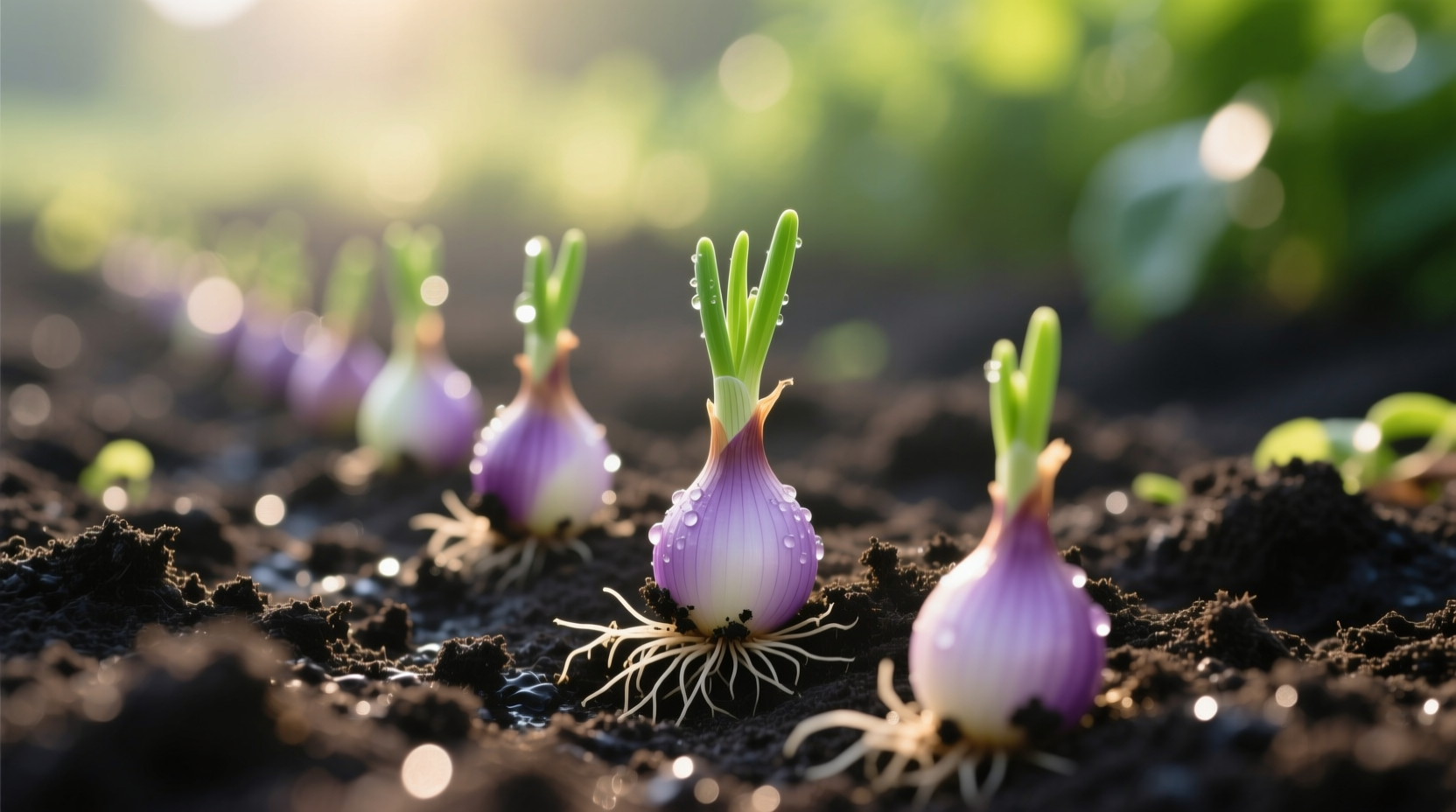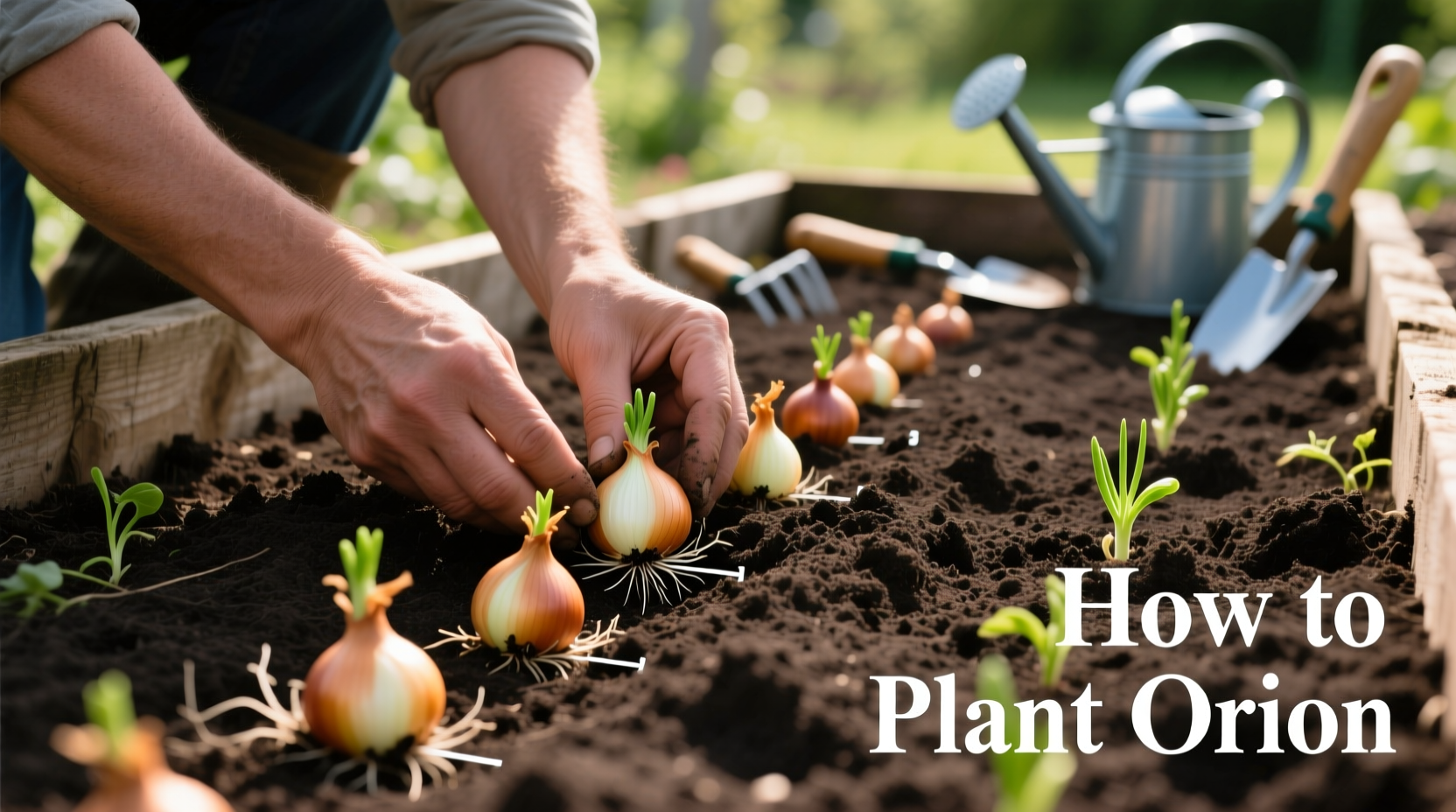Plant onions by selecting healthy sets or seeds, preparing well-draining soil with pH 6.0-7.5, planting bulbs 1-2 inches deep and 4-6 inches apart in early spring or fall, watering consistently but avoiding overwatering, and harvesting when tops fall over naturally after 3-5 months. This complete guide covers optimal timing, soil preparation, planting techniques, care requirements, and harvesting for a successful onion crop.
Discover the simple steps to grow your own flavorful onions right in your backyard. Whether you're a beginner gardener or looking to perfect your technique, this guide provides everything you need to know about planting onions successfully. Onions are one of the most versatile and rewarding vegetables to grow, requiring minimal space and offering excellent returns for relatively little effort.
What You'll Need Before Planting
Before you start planting onions, gather these essential supplies to ensure success. The right preparation makes all the difference in your onion harvest quality and yield.
| Item | Recommended Type | Why It Matters |
|---|---|---|
| Onion varieties | Yellow, red, white, or sweet onions | Different varieties suit different climates and uses |
| Planting method | Sets, seeds, or transplants | Sets are easiest for beginners; seeds offer more variety |
| Soil type | Well-draining loam | Prevents bulb rot and promotes healthy growth |
| Fertilizer | Balanced 10-10-10 or high nitrogen | Supports leaf development crucial for bulb formation |
Understanding Onion Growth Timeline
Successful onion planting requires understanding their growth cycle. Onions develop in distinct phases that determine your planting schedule and care approach.
Onions follow a predictable growth pattern when planted at the right time:
- Weeks 1-2: Root establishment and initial green growth
- Weeks 3-8: Rapid leaf development (critical for bulb size)
- Weeks 9-12: Bulb initiation as daylight increases
- Weeks 13-20: Bulb enlargement phase
- Weeks 21-22: Maturation when tops fall over naturally
This timeline varies based on your climate zone and onion variety. According to the USDA Agricultural Research Service, day-length requirements differ between short-day (10-12 hours), intermediate-day (12-14 hours), and long-day (14+ hours) varieties, directly affecting when bulbs form in your region.

Step-by-Step Planting Process
Follow these detailed steps for proper onion planting that maximizes your harvest potential.
Soil Preparation (2 Weeks Before Planting)
Prepare your garden bed by removing weeds and debris. Work in 2-3 inches of compost or well-rotted manure to improve soil structure. Onions prefer slightly acidic to neutral soil (pH 6.0-7.5), so test your soil and amend as needed. Raised beds work exceptionally well for onions as they provide better drainage.
Planting Onion Sets (Recommended for Beginners)
For most home gardeners, planting onion sets offers the highest success rate. Place sets pointed end up, 1-2 inches deep in the soil. Space them 4-6 inches apart in rows 12-18 inches apart. Gently firm the soil around each set without compacting it. Water lightly after planting to settle the soil.
Planting Onion Seeds (For More Variety Options)
If starting from seeds, sow them ¼ inch deep indoors 8-10 weeks before your last frost date. Transplant seedlings outdoors when they're pencil-thick, spacing them 2-3 inches apart initially, then thinning to 4-6 inches as they grow. Direct seeding works in mild climates but requires careful moisture management.
Essential Post-Planting Care
Proper care after planting determines your onion harvest quality. Focus on these critical elements:
Watering Requirements
Onions need consistent moisture, especially during bulb formation. Provide 1 inch of water per week, increasing to 2 inches during hot, dry periods. Water deeply but less frequently rather than shallow daily watering. Reduce watering when tops begin to fall over, signaling harvest time. Overwatering causes rot, while inconsistent watering creates double bulbs or poor storage quality.
Fertilization Schedule
Fertilize onions every 2-3 weeks with a nitrogen-rich fertilizer until bulbing begins. Switch to a phosphorus and potassium formula once bulbs start forming. Stop fertilizing completely 4 weeks before expected harvest. The University of California Cooperative Extension recommends side-dressing with ¼ cup of 21-0-0 fertilizer per 10 feet of row when plants are 4-6 inches tall.
Weed Management
Weeds compete with onions for nutrients and water. Hand-pull weeds carefully to avoid damaging shallow onion roots. Mulch with straw or shredded leaves to suppress weeds and maintain consistent soil moisture. Avoid deep cultivation near plants.
When Planting Methods Don't Work: Context Boundaries
Not all onion planting techniques work equally well in every situation. Understanding these limitations prevents common mistakes:
- Cold climates: Planting too early in spring causes bolting (flowering). Wait until soil reaches 50°F (10°C)
- Wet soils: Heavy clay soils require raised beds to prevent bulb rot
- Short-season areas: Choose fast-maturing varieties (70-90 days) rather than storage types
- Hot climates: Plant in fall for winter harvest rather than spring planting
The Cornell University Gardeners' Resource emphasizes that matching your planting method to your specific climate zone significantly increases success rates. For example, southern gardeners should plant short-day varieties in fall, while northern gardeners need long-day varieties planted in early spring.
Harvesting and Storage Tips
Harvest onions when at least 50% of the tops have fallen over naturally. Stop watering 1-2 weeks before harvest to cure the bulbs. Carefully lift bulbs with a garden fork, then cure them in a warm, dry, well-ventilated area for 2-3 weeks. Store cured onions in mesh bags or braided in a cool, dry place with good air circulation. Properly stored onions can last 3-6 months depending on variety.
Troubleshooting Common Problems
Address these frequent onion-growing challenges promptly:
- Bolting (flowering): Caused by temperature fluctuations; remove flower stalks immediately
- Small bulbs: Usually from overcrowding or insufficient sunlight; ensure proper spacing
- Rotting bulbs: Result of poor drainage or overwatering; improve soil structure
- Purple leaves: Indicates phosphorus deficiency; apply bone meal
According to the National Gardening Association, the most common mistake new onion growers make is planting too deep. Onion sets should have their shoulders just at or slightly above soil level for optimal growth.











 浙公网安备
33010002000092号
浙公网安备
33010002000092号 浙B2-20120091-4
浙B2-20120091-4